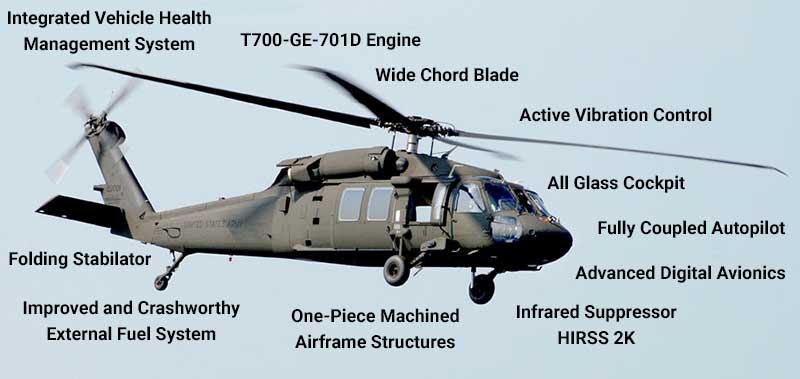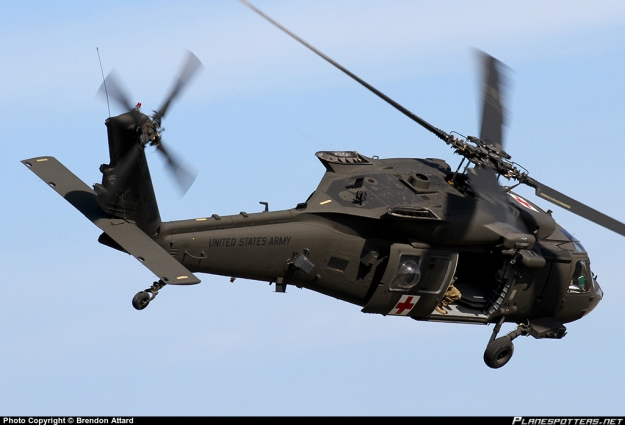Professional Insights: Enhancing Performance in UH 60 Helicopter Procedures
Understanding the Mechanics and Engineering Behind Uh 60 Helicopters
The UH-60 helicopter, commonly understood as the Black Hawk, stands as a pinnacle of modern-day rotorcraft technology, symbolizing a mix of robust design and detailed technicians. As we peel off back the layers of the UH-60's design, a world of intricate systems and meticulous engineering comes to light.
Background of UH-60 Helicopters
The background of UH-60 helicopters traces back to the late 1970s when the United States Army sought a flexible and sophisticated energy helicopter to replace its aging fleet. In action to this demand, the Sikorsky Airplane Corporation created the UH-60 Black Hawk helicopter. Presented in 1979, the UH-60 rapidly ended up being a staple in army procedures because of its outstanding abilities.
The UH-60 was designed to succeed in a selection of goals, including army transport, clinical emptying, electronic war, and special operations. Its capability to adapt to various functions made it an important property to the U.S. uh 60. Military and other army forces worldwide
For many years, the UH-60 system has gone through several upgrades and variants to enhance its efficiency and keep rate with developing goal demands. These helicopters have actually seen substantial service in disputes such as the Gulf Battle, Afghanistan, and Iraq, showcasing their dependability and versatility in diverse functional environments. The UH-60's abundant history is a testament to its long-lasting legacy as a leading energy helicopter.

Engine and Power Equipments
Using innovative propulsion innovation, UH-60 helicopters are geared up with advanced engine and power systems to ensure optimum efficiency and dependability in a variety of operational circumstances. The UH-60, generally referred to as the Black Hawk, is powered by two General Electric T700-GE-701D engines, each capable of supplying up to 1,940 shaft horse power. These turboshaft engines provide the necessary drive for the helicopter to bring out its missions properly, consisting of troop transportation, medical evacuation, and fight support.

Blades System and The Rules Of Aerodynamics
Just how do the blades system and the rules of aerodynamics of UH-60 helicopters add to their operational effectiveness and flight capabilities? The rotor system of the UH-60 helicopter plays an important function in offering lift and propulsion. The UH-60 features a four-bladed, fully articulated blades system that enables high ability to move and security during flight. This design makes it possible for the helicopter advice to execute a large range of objectives, from transport and medical evacuation to battle procedures.
The rules of aerodynamics likewise play an essential role in the efficiency of UH-60 helicopters. The streamlined fuselage and blades blade style reduce drag, permitting the helicopter to accomplish higher rates and far better gas efficiency. The wind resistant style of the UH-60 also adds to its capability to operate in varied environmental problems, including high altitudes and warm temperatures.
Avionics and Trip Control Systems

In its detailed coordination with the rotor system and the rules of aerodynamics of UH-60 helicopters, the avionics and trip control systems form an important network of modern technologies shaping the aircraft's operational abilities. In the UH-60, these systems consist of electronic displays, communication radios, GPS navigating, why not find out more climate radar, and auto-pilot systems.
The flight control systems of the UH-60 are accountable for equating the pilot's inputs into the proper changes to the blades system, ensuring stable flight and maneuverability. These systems consist of hydraulic actuators, servos, his comment is here and computers that collaborate to regulate the major and tail blades, along with various other trip control surface areas. By specifically taking care of the helicopter's trip characteristics, these systems make it possible for pilots to perform a variety of missions, from transport and search-and-rescue to combat operations, with precision and confidence.
Role and Applications in Aviation
Avionics systems in UH-60 helicopters include an array of electronic systems that help in navigation, interaction, monitoring, and managing various aircraft features. These systems include electronic displays, autopilot systems, interaction radios, GPS navigation tools, and weather radar. In addition, these systems incorporate security attributes such as autopilot modes, surface awareness cautioning systems, and security enhancement systems to enhance the general safety and security and operational abilities of the UH-60 helicopters in numerous missions, including troop transportation, clinical evacuation, search and rescue, and aerial firefighting.
Verdict
To conclude, the UH-60 helicopter is a flexible airplane with an abundant background and progressed engineering. Its engine and power systems, rotor system, aerodynamics, avionics, and trip control systems all interact to make it a reputable and reliable device. The UH-60's function and applications in aeronautics are substantial, ranging from military operations to search and rescue objectives. Its continued advancement and use show its value in the area of air travel (uh 60).
In its elaborate coordination with the blades system and the rules of aerodynamics of UH-60 helicopters, the avionics and trip control systems form an essential network of innovations forming the airplane's operational capacities.The flight control systems of the UH-60 are responsible for equating the pilot's inputs right into the ideal modifications to the blades system, ensuring secure trip and maneuverability. Avionics systems in UH-60 helicopters include an array of electronic systems that help in navigating, communication, surveillance, and managing various airplane functions. In addition, these systems include safety attributes such as auto-pilot modes, surface recognition advising systems, and stability augmentation systems to enhance the total safety and security and operational capacities of the UH-60 helicopters in numerous missions, consisting of troop transport, clinical discharge, search and rescue, and aerial firefighting.
Its engine and power systems, rotor system, the rules of aerodynamics, avionics, and trip control systems all work together to make it a dependable and reliable maker.